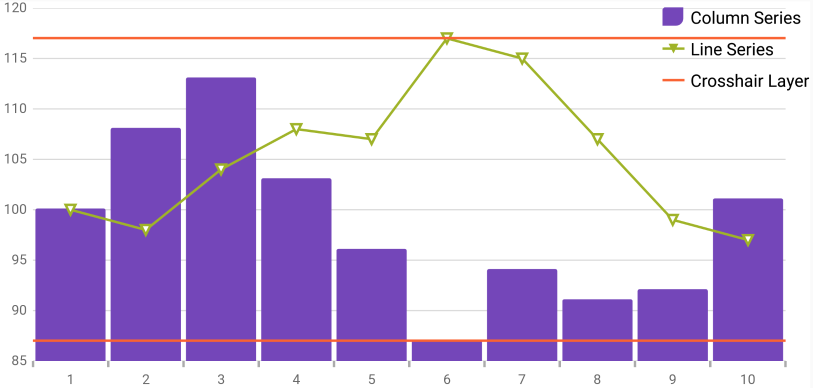
This topic provides information about the properties and methods that the touch interaction feature uses for highlighting and interacting with the tooltip interactions inherited from the Series class.
The following topics are prerequisites to understanding this topic:
The touch interactions layers inherit those Series base class properties and methods that are relevant in the context of touch interactions. For example, touch interactions, by design do not interact with the touch position, so they do not raise the touch events. Also, the touch interaction layers do not display data directly, so methods such as ScrollIntoView are not applicable for this feature.
The following table summarizes the Series class properties inherited by the touch interaction classes.
The following screenshot illustrates how the XamDataChart control’s CrosshairLayer looks using the following settings:

Following is the code used in this implementation
In XAML:
<ig:CrosshairLayer VerticalLineVisiblity="Collapsed"
Legend="{x:Reference TitleLegend}"
UseLegend="True"
CursorPosition="0.55, 0.55"/>In C#:
var crosshairLayerSeries = new CrosshairLayer();
crosshairLayerSeries.UseLegend = True;
crosshairLayerSeries.CursorPosition = new Point(0.55, 0.55);
chart.Series.Add(crosshairLayerSeries);